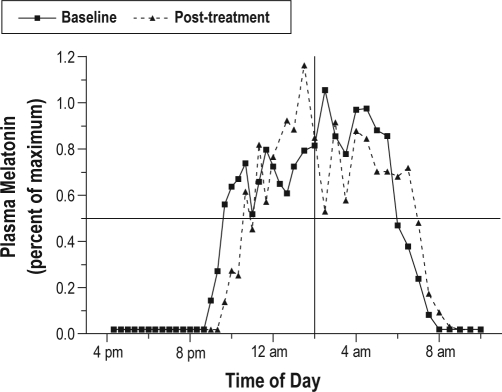Figure 3.
Baseline and post-treatment melatonin profiles from one subject showing a light-induced phase delay of the circadian melatonin rhythm. Blood samples were collected for 18 h on the night before and the night following light exposure (2000 lux light for 1 h). Note the rapid rise in melatonin levels between 21:00-23:00 (9:00-11:00 pm) and the rapid decline in melatonin between 06:00-08:00 (6:00-8:00 am). These periods of abrupt change, e.g., the time that melatonin levels rose to 50% of maximum (DLMO 50%), and the time when melatonin levels declined (DLMOff 50%), were used to mark the phase of the melatonin rhythm. Comparison of the time of these phase markers on the baseline and post-treatment nights showed a 101-min delay of the melatonin onset and a 59-min delay of the melatonin offset. The change during the subject's control GCRC stay (40 min and 20 min, respectively) was then subtracted to determine the phase delay attributable to the light (61 min for the DLMO and 39 min for the DLMOff). The midpoint of the melatonin rhythm on the baseline night is at the intersection of the horizontal and vertical lines.

